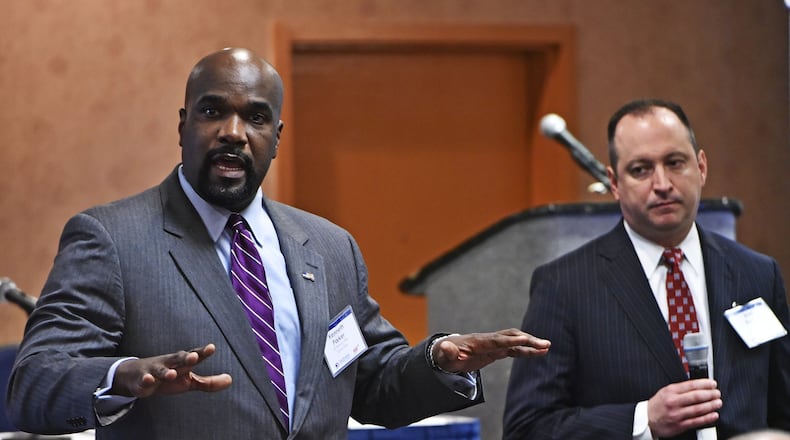MORE: Law enforcement looking to stop heroin-addicted drivers
A survey of Tri-State motorists conducted by AAA found 74 percent think those who drive after using illegal drugs pose a very serious threat to their safety. The survey found 71 percent view those who drive after drinking alcohol as a very serious threat to their safety.
Hamilton police Officer Eric Taylor has been monitoring the drug activity and those who pose a threat in and around the city in the drug trade.
“Heroin is destroying families and also the addicts are putting other people at risk,” Taylor said. “Officers have seen drivers passed out at stop lights after using the drug with their car still in gear. The problem is a serious one, and it is nationwide.”
MORE: Suspect in fatal police chase begs deputies ‘Kill me’
For example, on March 27, a driver in a stolen truck led police on a two-county chase from Miami County into Montgomery County. He crashed and killed an innocent motorist, then reportedly told deputies that he took heroin while being chased by officers.
April is National Distracted Driving Awareness Month, and the Hamilton Post of the Ohio State Highway Patrol, along with Butler County Safe Communities and Madison Jr./Sr. High School are working together to send the message to drivers to keep their eyes and focus on the roadway.
Determining how to combat distracted and drug driving locally and across the state is not going to be easy, according to Lt. Clint Arnold, Hamilton post commander of the Ohio State Patrol (OSP).
MORE: Texting while driving may lead to higher fines, penalties in Ohio
He said last year 13,994 crashes in Ohio had a reported distraction, including 26 fatal crashes. From 2015 to 2016, the number of reported distracted drivers rose 5 percent over the previous year after rising 11 percent from 2014 to 2015.
Arnold explained that the law has defined distracted driving as any non-driving activity with the potential to distract a person from the primary task of driving and increase the risk of crashing.
“Every time someone takes their eyes or their off the road - even for just a few seconds - they put their lives and the lives of others in danger,” Arnold said. “Distracted driving is unsafe and irresponsible. In a split second, its consequences can be devastating.”
He added that sending or receiving a text message takes a driver’s eyes off the road for an average of 4.6 seconds, the equivalent of driving the length of an entire football field when traveling at 55 mph.
Ohio law bans all “electronic wireless communication device” use for drivers under 18. Texting while driving is illegal for all drivers, as a secondary offense.
State Reps. Bill Seitz, R-Cincinnati, and Jim Hughes, R-Columbus, have introduced House Bill 95 to add a $100 penalty on top of other fines for moving violations if the driver was distracted by a “handheld electronic communications device.”
Arnold said OSP troopers about “a-year-and-a-half-ago” started to note on tickets issued to drivers if their violation was caused by distracted driving, but “legislating the way out of the problem” might not work.
“We know that their are numerous accidents caused by distracted driving,” he said. “But they are not easy to prove - we are at the mercy of the driver to tell the truth unless we have witnesses or evidence clearly showing it happened. I pulled a guy over on my way to work and he had a violation for distracted driving, but he was honest and said he had spilled hot coffee in his lap.”
Jen Bierer, traffic safety coordinator for Butler Safe Communities, worked with a group of students at Madison Jr./Sr. High School to create a presentation to young drivers about distracted driving.
She said the students created a survey for the peers at the school and the highest response for distracted driving was talking on the phone and texting, while surprisingly, using drugs or sleepiness was came in last. Passengers and music were the other issues students cited as major distractions while in the car.
Arnold said many teens are not as interested in learning how to drive or getting a license as they used to be.
“Teens put off getting their license because that takes away from time they have spending on the phone,” he said. “They’d rather sit in the passenger seat and have somebody drive them so they don’t miss the next text from their friend.”
The next frontier moving beyond distracted and drugged driving for law enforcement will be technology, according to Arnold.
“Autonomous vehicles - driverless- might be here quicker than people think,” he said. “Currently on the Ohio Turnpike they are testing driverless semi-trucks. People are going to be more distracted and quit paying attention. It is unsafe and irresponsible.”
About the Author
